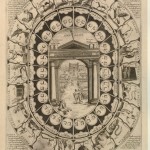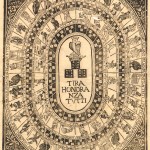“Il nuovo e molto dilettevole giuoco dell’gato”
This is a leather game board which is a variation on “Il nuovo e molto dilettevole giuoco dell’oca” — “The new and very entertaining game of the goose” – a late-period Italian board game. It’s painted with acrylic paints, and the dice are hand made with sculpty clay which was baked and painted. The game pieces are carved stone cats, which were purchased at Birka (made in Peru!)
It was made as a gift in the East Kingdom Artisanal Exchange for the second EKAE swap, for Lady Matilda Fossoway. As her heraldry features cats and acorns, this version of the game features cats and trees.
You can download an 11×17 pdf version of the game to print and play!
The rules on this version are as follows:
To play, roll dice and advance the number shown. If you land in occupied space, the player in the space goes to the space the other player came from. Some spaces have special effects. Cats – go double the dice forward, or backward, as the cat faces. Bridge – Go to square 12. Labyrinth – return to square 30. Gate – Stay until another lands, go to his prior spot. Skull – return to start. Roll a 6&3 go to square 26; if a 4&5 go to 53. To win get to 63 exactly, if too many, go backwards the surplus. He who reaches 63 is the winner of this fine diversion.
**Note: I ought to have noted that Gate may not leave until someone else takes their place, and pressed for space, these read a little like foreign translations of stereo installation instructions.**
_______________________________________________________
Most of the documentation is below, but you may download a pdf copy if you wish.
“The new and very entertaining game of the goose” has a somewhat mysterious origin, but is rooted firmly in period. A version of it was given to King Philip II of Spain in 1580 by Ferdinando I de ‘Medici. It is said that Philip was quite amused by the game.◊
The boxes on the version of De ‘Medici were decorated with symbols that were part of the tradition: two dice, a skull , a queue, a bridge , a maze or a goose. Some believe that it is a simple gambling game and the winner would take the pot and purchase the goose for feasting. Others find deep symbolism in the goodness of the geese and the tragedies one may encounter as they journey around the board.
In general, the board is 63 squares in a spiral and is played with two dice, and what markers one wishes to use. Skill is entrusted to the luck of the dice, and the board offers blessings and curses – geese allow forward motion, or backward on occasion; hazards keep one from moving or, in the case of death, send one back to the beginning of the cycle.
The game board has been adapted by regions and in different times in history to represent many different things, though the root of the game is basically the same.
Variation in boards is found but all seem to have the a well/pit, prison, bridge, skull/death, labrynth/maze, and geese (or people), and specific places to be when specific combinations of dice are rolled.
As this is a gift board for a specific individual, it has been altered to suit her persona and interests. Geese have been changed to cats; it has a bridge, a well, a maze (featuring a seam-ripper sculpture fountain), death (who is fishing), and the jail has been replaced with an SCA event gate – since that is a space where one must stay until another lands and replaces the player – a lot like actual gate!
It features heraldic elements from Tir Mara and from the lady for whom it was made, as well as nods to the Boreal Army star, my own heraldry (snails) and the Northern Army’s star. The sea monster is for her home in the maritime provinces of Tir Mara. The seasons weave in and out of the game board. “Special” squares are highlighted in gold ink. The feature of the game is the center which boasts her coat of arms, and a medieval pavilion in which waits a cat. The sky is meant to represent the Duc du Bary illuminations which have beautiful colors of sky in them. Some parts of the board have actual constellations; Polaris is in her correct relative place, for example.
The “Gato” rules are a combination of the rules of several boards, simple as they could be made but still true to the original game as much as possible.
Below are several boards.
The Rules
Variations in rules are remarkably limited – for the most part the game seems to survive with stunning similarity to its original version!

Ruleset 1
The object of the game is to be the first person to get to the end of the journey.
The youngest player goes first. Roll the dice and move your counter one square for each spot on the dice. Then it is the next player’s turn unless one of these things happens:
If you throw a 3 on your first turn you can move straight to square 26.
If your counter lands on a Goose square you can move again without throwing the dice. You move the number of spots of your original throw. For example throw a 4, land on a Goose, move four squares forward again.
If you land on the Bridge, square 6, miss a turn while you pay the toll.
If you land on the Inn, square 19, miss a turn while you stop for some tasty dinner.
If you you land on the Well, square 31, make a wish and miss three turns. If another player passes you before your three turns are up you can start moving again on your next go.
If you land on the Labyrinth, square 42, you will get lost in the maze and have to move back to square 37.
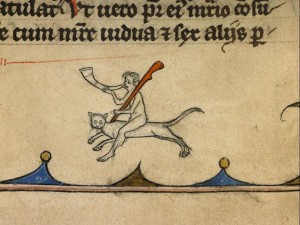
If you land on the Prison, square 52, you will have to miss three turns while you are behind bars. If another player passes you before your three turns are up you can start moving again on your next go.
If you land on Dead, square 58, you have to go back to square 1 and start all over again!
Players may not share squares, so if your dice roll would land you on an occupied square you will have to stay where you are until it is your turn again.
To win you must reach square 63 exactly. If your dice roll is more than you need then you move in to square 63 and then bounce back out again, each spot on the dice is still one sqaure in this move. If you land on any of the special squares while you are doing this then you must follow the normal instructions.
When you land on square 63 exactly you are the winner!*

Ruleset 2‡
Some boxes of arrival have a special effect. In the traditional version, the boxes representing geese (hence the name of the game) allow you to move forward immediately a number of squares equal to those covered by the movement just made. These boxes are placed every nine boxes from boxes 5 and 9 (a consequence of this provision is that an initial launch of 9 immediately brings the player to the box 63 and then to victory).
The other boxes special are the following:
- at box 6 (“the bridge “), you pay the post and repeat the movement as in the boxes with the geese;
- in box 19 (” home “or” inn “) you pay the post and remain still three rounds;
- to boxes 31 (” pit “) and 52 (” prison “) will remain stationary until it arrives in the box another counter, which is in turn” imprisoned “;
- in box 42 (” Labyrinth “) you pay the post and return to 39;
- in box 58 (” skeleton “), you pay the post and return to 1.
The box of the target (63) must be reached with a roll of the dice exact, otherwise reached the bottom, you go back the excess points.
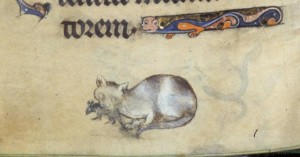
Ruleset 3 †
II. There are no captures in the game but as we all know from the old spaghetti-westerns , “this field’s too small for the both of our pieces”, so when you land on an occupied field the other piece has to move back to the field you just came from.
The board consists of 63 fields. Some of them are specially marked:
III. 5, 9, 14, 18, 23, 27, 32, 36, 41, 45, 50, 54, 57 – The Goose. If you land on the goose it allows you to move your piece again and again with the same number of pips until it lands on a goose-less field. You should say – “from goose to goose I move as I choose”. However some of the geese “take a backward glance” so then you should “move as you choose”, but backwards.
IV. 6 – The Bridge – if your piece lands on the bridge, you immediately advance to field 12, declaiming “from bridge to bridge come see if I miss”.
V. 19 – The Inn – we all know what happens when entering a nice pub – you lose a turn; but there’s one exception – if another player arrives at the Inn in the same turn, he or she loses a turn but you land on the field he came from.
VI. 31 – The Well – you miss two turns – if another player lands there, he or she frees you and you may return to the field you came from.
VII. 42 – The Maze – you must go back to field 30, sorry.
VIII. 52 – The Prison – you stay there until another player frees you – then you go to his or her previous field
IX. 58 – The Skull – skulls have never meant anything good, you have to return to field 1 and begin again.
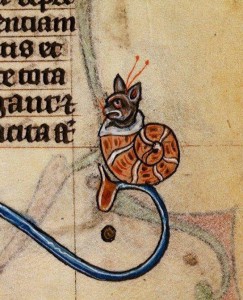 X. 26, 53 – The Dice – if you throw a 6 and a 3 you automatically land on 26, whereas if you roll a 4 and a 5, you go to 53. You’re supposed to say “from dice to dice I slide and get by”.
X. 26, 53 – The Dice – if you throw a 6 and a 3 you automatically land on 26, whereas if you roll a 4 and a 5, you go to 53. You’re supposed to say “from dice to dice I slide and get by”.
XI. 63 – The Goose’s garden – yes, you won!
XII. But to win the game you have to land exactly on 63. If there are too many pips on your dice, unfortunately you have to move backwards in the amount of the surplus (counted from field 63) and try once again until you succeed.
◊ http://www.giocodelloca.it/gioco_oca_mirano.asp
* http://www.compendia.co.uk/goose_rules.htm
† http://www.europeandme.eu/13heart/664-the-game-of-the-goose
‡ http://www.giochidelloca.it/dettaglio_storia.php?id=54










